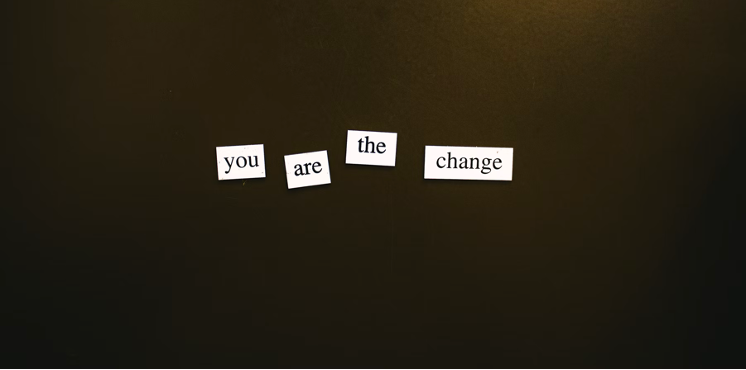Ask any dyslexic and they’ll tell you that spelling, is not our forte. We have lots of talents, but being able to spell consistently is unfortunately not one of them.

Bad spelling is a classic tell-tell sign of this brilliant, yet challenging neurodiverse condition. It’s my constant companion wherever I go. Sure, I can check over emails, presentations, notes and texts multiple times, and read them back to myself over and over, but alas, there will always be something not quite right. A missed comma here, a typo there, and a sprinkling of incorrect spelling just for good measure.
But here’s why. Spelling doesn’t come easy to dyslexics. It’s a well-known fact that dyslexia impacts phonological processing and memory. The exact tools you need to spell well. And if that wasn’t enough, research into dyslexia has shown that it also affects other key areas of the brain that are used to spell:
- Broca’s area in the frontal lobe, which helps people verbalise words that they read on the page.
- A second area between the temporal and parietal lobes which facilitates the phonetic decoding of letter sounds.
- An area in the occipital lobe that recognises whole words.
In short, the odds are stacked against us. Being dyslexic means I struggle to sound words out, recognise mistakes and importantly, find a connection between the letters in the words themselves. There is of course a reason why they fit together, but honestly, half the time, I don’t know why. Sometimes I give up altogether and simply speak into my Google Chrome, which generates the word within a spilt second – correctly spelt, with a two-liner on its meaning – something my brain will never be able to do.
But contrary to what people may think, that doesn’t mean I can’t write. Ironically, 80% of my job in advertising is writing. Social media posts, press releases, external communications plans – I write it all and I love it. That’s why I do what I do. And I’m not alone. There are numerous dyslexic writers across the creative industries. Only recently, one of Britain’s best-loved storytellers Michael Morpurgo, wrote an article for The Guardian, where he bravely acknowledged his struggles with spelling. Unfazed by negative reviews and comments on his spelling, Morpurgo continues to place his focus on expressing creativity and his love for storytelling – earning him an OBE and a Knighthood.
From the outside in, it can seem unconventional – taking on a writing role when you know full well that you have difficulties with spelling. But that’s what dyslexics do best. We defy the odds, we’re unconventional, and we always find a way. To thrive in places where we ordinarily wouldn’t stand a chance, we have to play to our strengths; creativity, problem-solving and of course, thinking outside the box.
Looking for alternative routes to success, dyslexic writers put these strengths into practice. Assistive technology is a prime example, with software available for dyslexics, ranging from the everyday Grammarly and spell check, to more specialised technologies, such as text-to-speech software and speech recognition software. As the Yale Centre for Dyslexia and Creativity notes “Assistive technology helps dyslexics save time and overcome challenges’’.
My POV is quite simple. I wouldn’t be able to write without the support of software. It’s my lifeline and I’m not ashamed to say it. It puts me on a level playing field with my neurotypical work colleagues and allows me to concentrate on expressing my creativity, voice and flare. Helping me to write, without being able to spell. And in the moments where I need that added layer of support, I look to my work colleagues and sub-editors, who are my extra set of eyes and ears.
But it’s not just practical support dyslexic writers need to succeed. Attitudes around dyslexia in the workplace also have to change. As sadly reported by Sarah Hecks, Head of Editorial at We Are Social, there are still toxic and inaccurate misconceptions about dyslexics and their ability to succeed in writing roles. Every dyslexic writer and editor Sarah has spoken to has a ‘’database of disheartening comments about their relationship with words – some are judgements from others, some are personal frustrations or wider expectations around the correct use of English’’.
With neurodiverse employees making up a staggering 18% of the workforce in the advertising industry, agencies should be standing tall and proud next to their dyslexic talent. Here are four ways agencies can embrace and support dyslexic writers:
- Consider screening employees during their initial induction to the agency
- This will create a safe space for people to disclose their dyslexia to the HR/People team.
- Implement reasonable adjustments for dyslexic writers, which may include:
- Offering assistive text and screen reading software on all applications, where possible.
- Presenting information in other formats e.g audio or video, drawings, diagrams and flowcharts.
- Giving instructions one at a time, slowly and clearly without distractions.
- Printing resources on coloured paper and changing the background colour of computer screens and presentations.
A full list of reasonable adjustments can be found on the BDA website
- Be conscious of tone and the language used when giving feedback to dyslexic writers, consider:
- Providing constructive and clear feedback, outlining the key points for improvement and ways to improve, either verbally or in writing.
- Ensure dyslexic writers are given quiet spaces and uninterrupted periods of concentration time. This may look like:
- Allocating a private workspace if possible.
- If interrupting, allow the person to pause and write down what they are doing to refer to when resuming work.
- Respecting a “do not disturb” sign.
I continue to write because I love it. And do you know what? I’m not half bad at it either.
By Elsa Wiles Jenkins at The&Partnership

You must be logged in to post a comment Login